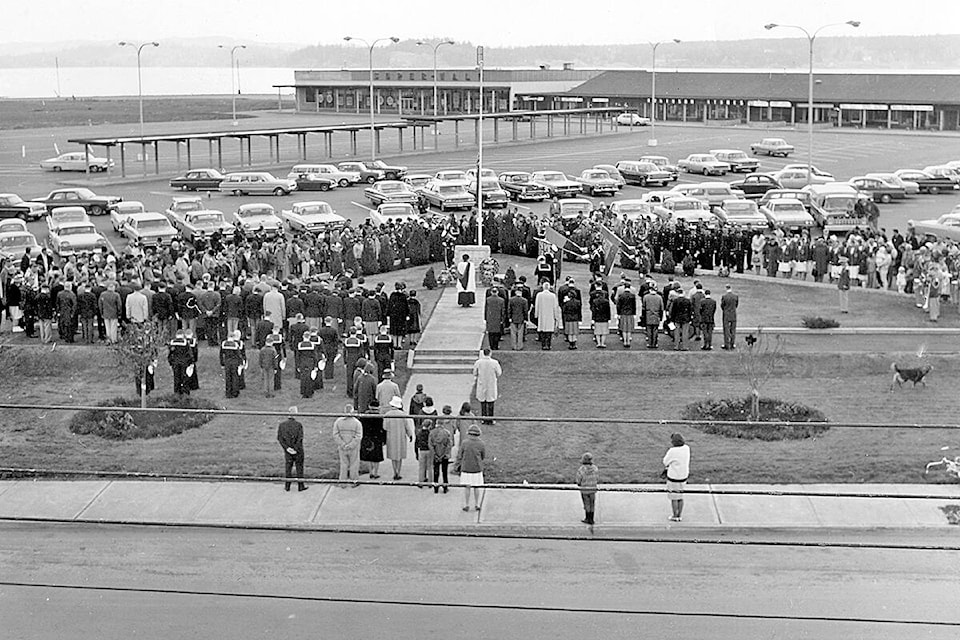By the Museum at Campbell River
We have in the past year featured some Look Back articles about the history of place naming in our community, specifically focusing on street names.
One street name that was suggested for a future article was Vanstone Road. While in the process of researching this we came across some letters and newspaper articles touching on the naming of Mount Vanstone, as well as other nearby mountains after fallen soldiers. With Remembrance Day approaching, we knew that this was the story to focus on.
David William Vanstone was born in Vancouver in 1910. His parents were David and Eliza Vanstone, early settlers in North Campbell River. The Vanstone name is well-engrained in the local history books, with buildings, streets, and businesses past and present bearing their name. One of seven brothers, David grew up in Campbell River, where he started a career as a logger. When he enlisted in the army, he had a wife, Evelyn, and two young children, Elise and David. He enlisted on July 13, 1940 into the 2nd Battalion, 16th Canadian Scottish Regiment (Canadian Active Service Force). He was later transferred to the 4th Battalion Seaforth Highlanders of Canada and was sent overseas to Italy, where he stayed until his injury at the Battle for Ortona, and later passing at a hospital in North Africa, in 1943.
In some cases, the naming of geographic places can act as a memorial. In Canada, the practice of naming geographic features after soldiers lost at war officially began at the Geographical Names Board of Canada in the 1950s. Names were assigned to features in the soldiers’ home province, although not always near where the soldier lived. A newspaper article from 1978 indicated the practice of naming features using the War Casualty List continued at that point, although as time passed tracking down surviving family members became increasingly difficult and so some were not notified.
It was during this period, in the late ‘70s, that several young Campbell River men who died while serving in World War II became the namesakes for a cluster of mountains located northeast of Campbell River in the Coast Mountain Range, near the junctions of the Elaho River and Clendenning Creek. One of these mountains, Mount Vanstone, honours David William Vanstone. Other mountains nearby include Mount Oswald, named after Flying Officer Elmer Adrian Oswald, Mount Perkins named after Private Robert Ernest Perkins, Mount Ralph named after Able Seaman George Ralph, and Mount Whiting named after Able Seaman Basil Evans Whiting. Each of these men left Campbell River to serve their country and, in their passing, left behind loved ones and a community in mourning.
To find out more about Campbell River’s fallen soldiers, contact the Museum at Campbell River Archives or the Campbell River Genealogy Society. Both have compiled research to ensure the names on our cenotaph are not forgotten. The Museum has school programs in the Archives Research Centre focused on letters left behind by Elmer Oswald. The Genealogy Society has a dedicated website that provides background information about the people whose names are on the cenotaph www.crgenealogysociety.ca/crgs_cenotaph/ .
For an expanded version of this article containing details about the other soldiers mentioned, check the Museum’s blog as we approach Remembrance Day.
